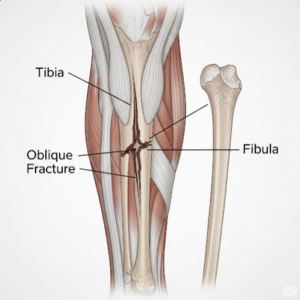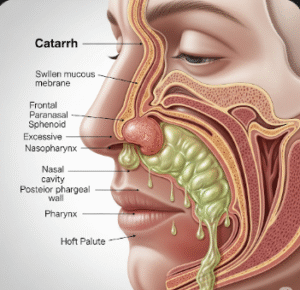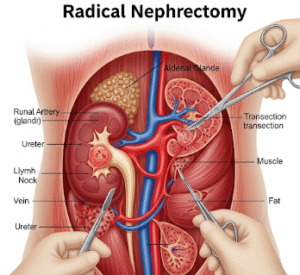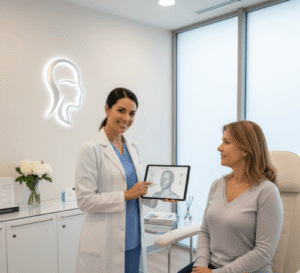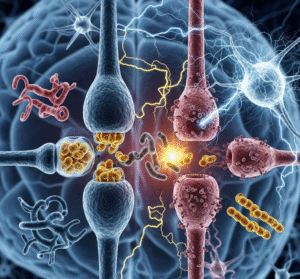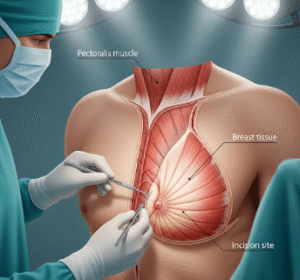Overview
Acquired nystagmus is a neurological condition characterized by involuntary, rhythmic eye movements that develop later in life due to an underlying disorder or injury. Unlike congenital nystagmus (present at birth), acquired nystagmus often causes disruptive symptoms such as dizziness, blurred vision, and imbalance, significantly affecting daily activities and quality of life.
It is a sign of a dysfunction in the brain, inner ear, or optic pathways and requires thorough medical evaluation to determine the root cause.
What is Acquired Nystagmus?
Acquired nystagmus refers to uncontrolled, repetitive eye movements that occur horizontally, vertically, or in a rotary pattern. It is typically a symptom of another underlying condition, such as multiple sclerosis, stroke, brain tumor, or vestibular disorders.
These eye movements interfere with the brain’s ability to maintain stable vision, often leading to oscillopsia, where objects seem to move or bounce, especially during head movement.
Symptoms
- Involuntary eye movements (side-to-side, up-down, or circular)
- Blurred or shaky vision (oscillopsia)
- Dizziness or vertigo
- Difficulty focusing or reading
- Unsteadiness or balance problems
- Nausea (in cases involving inner ear disorders)
- Sensitivity to light (photophobia)
- Head tilting to compensate for vision issues
Symptoms may worsen with fatigue, stress, or rapid head movement.
Causes
Acquired nystagmus can result from problems in the central nervous system, inner ear, or visual system. Common causes include:
- Neurological disorders:
- Multiple sclerosis
- Stroke
- Brain tumors (especially in the brainstem or cerebellum)
- Head trauma or concussion
- Inner ear and vestibular conditions:
- Vestibular neuritis or labyrinthitis
- Meniere’s disease
- BPPV (Benign Paroxysmal Positional Vertigo)
- Medication toxicity:
- Anticonvulsants (e.g., phenytoin)
- Benzodiazepines or barbiturates
- Alcohol intoxication or withdrawal
- Vitamin deficiencies:
- Vitamin B1 (thiamine)
- Vitamin B12
- Infections:
- Encephalitis
- Syphilis
- Lyme disease
- Visual pathway damage:
- Optic nerve injury
- Ocular albinism (rare in acquired cases)
Risk Factors
- Age over 40 (for stroke-related cases)
- History of neurological disease
- Alcohol or drug abuse
- Use of certain medications
- High blood pressure or cardiovascular issues
- Autoimmune conditions
- Inner ear infections or trauma
- Family history of neurological disorders
Complications
If untreated or the underlying cause is severe, acquired nystagmus can lead to:
- Permanent visual instability
- Difficulty walking or driving
- Falls or accidents due to balance issues
- Anxiety, depression, or reduced quality of life
- Worsening of the underlying neurological condition
Prevention
While not all cases of acquired nystagmus are preventable, you can reduce your risk by:
- Managing chronic conditions (e.g., hypertension, diabetes)
- Avoiding neurotoxic medications or monitoring their use
- Limiting alcohol intake
- Protecting your head from trauma (helmets, seatbelts)
- Seeking prompt treatment for infections and vestibular symptoms
- Maintaining a healthy diet rich in B vitamins
- Regular neurological and vision checkups if at risk
Treatment Options korea
Treatment focuses on addressing the underlying cause and managing symptoms:
1. Treat Underlying Conditions
- Corticosteroids or immunotherapy for multiple sclerosis
- Antibiotics or antivirals for infections
- Surgery or radiation for tumors
- Stroke management with rehabilitation and medication
2. Medications
- Baclofen, gabapentin, or memantine may reduce nystagmus severity
- Anti-nausea drugs (e.g., meclizine) for vertigo
- Vitamin supplementation (B1, B12) if deficient
3. Vision Therapy
- Prisms in glasses to reduce eye movement
- Magnifiers or large-print reading materials
- Tinted lenses to reduce light sensitivity
4. Physical Therapy
- Vestibular rehabilitation to improve balance and coordination
- Eye movement training and exercises
5. Surgery (rare)
- Tenotomy (surgical weakening of eye muscles) may reduce severity in select cases


